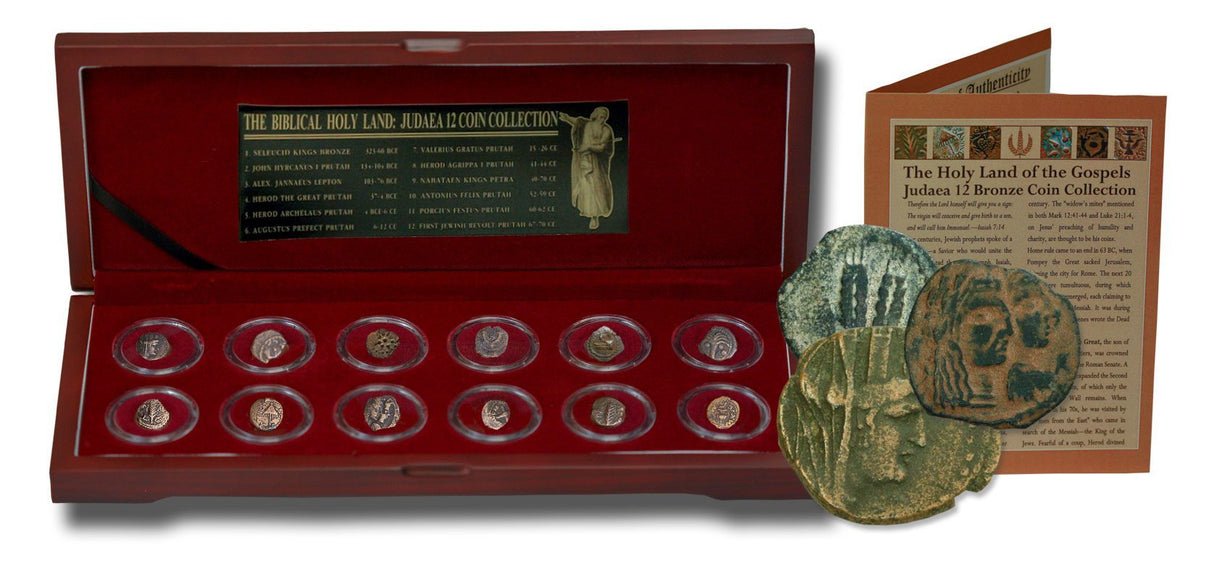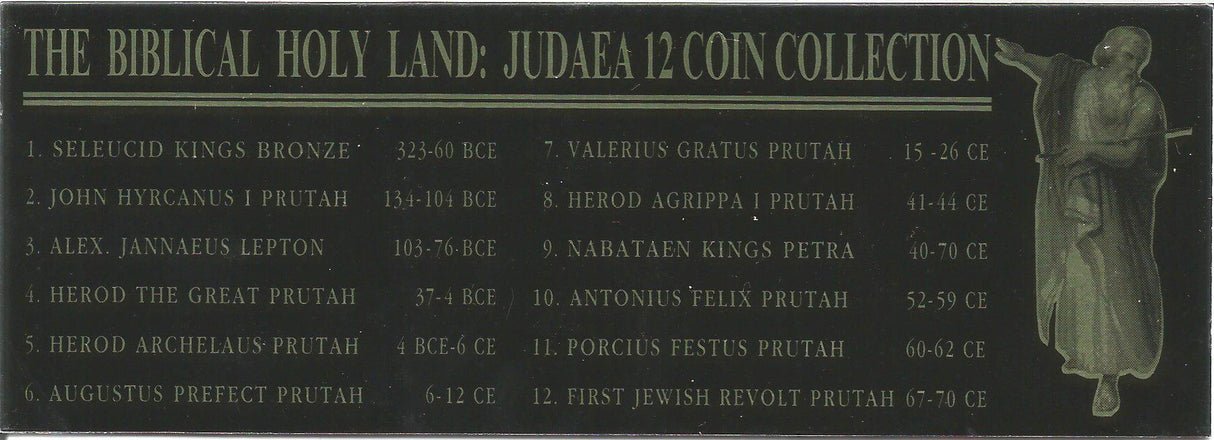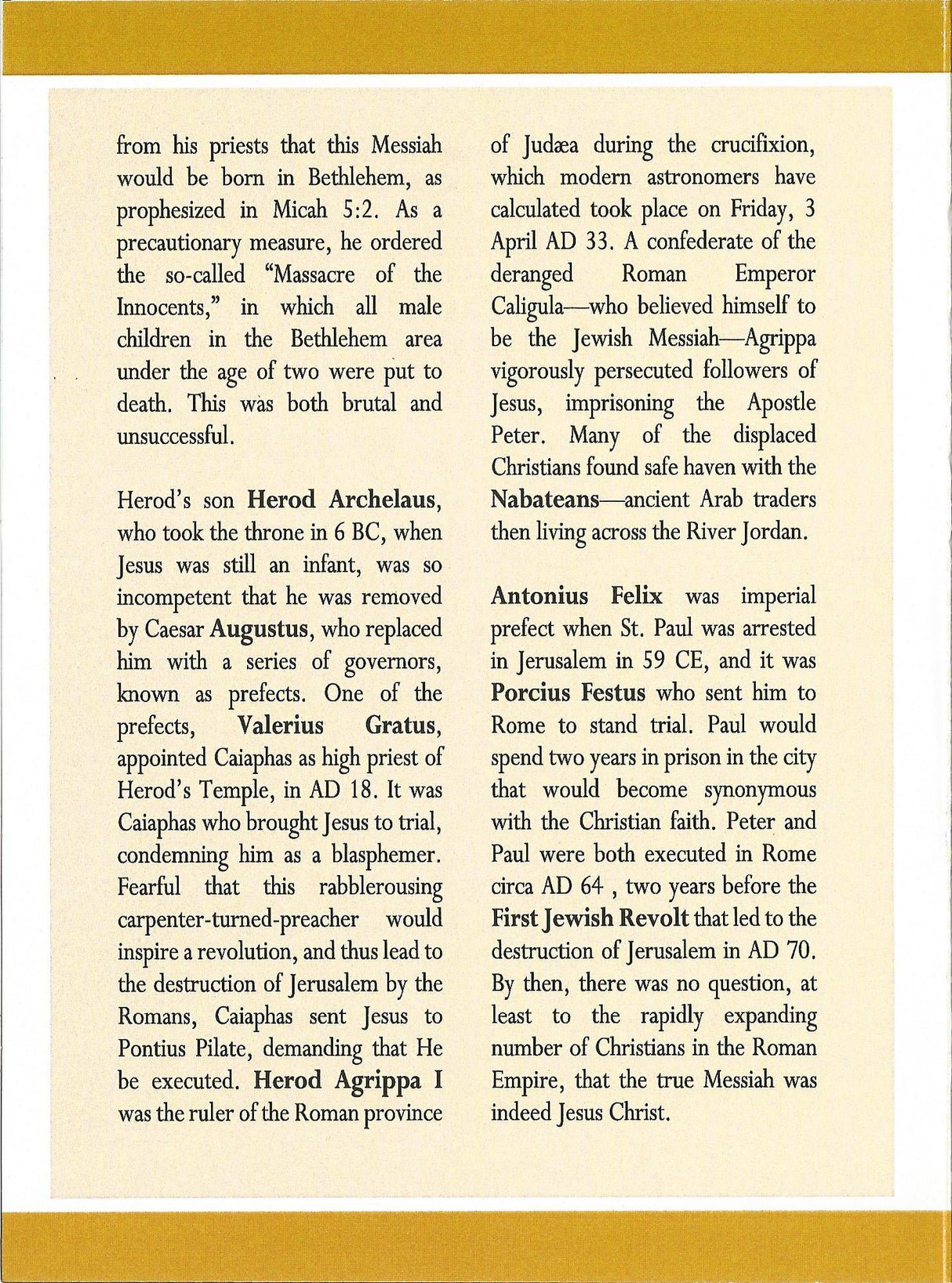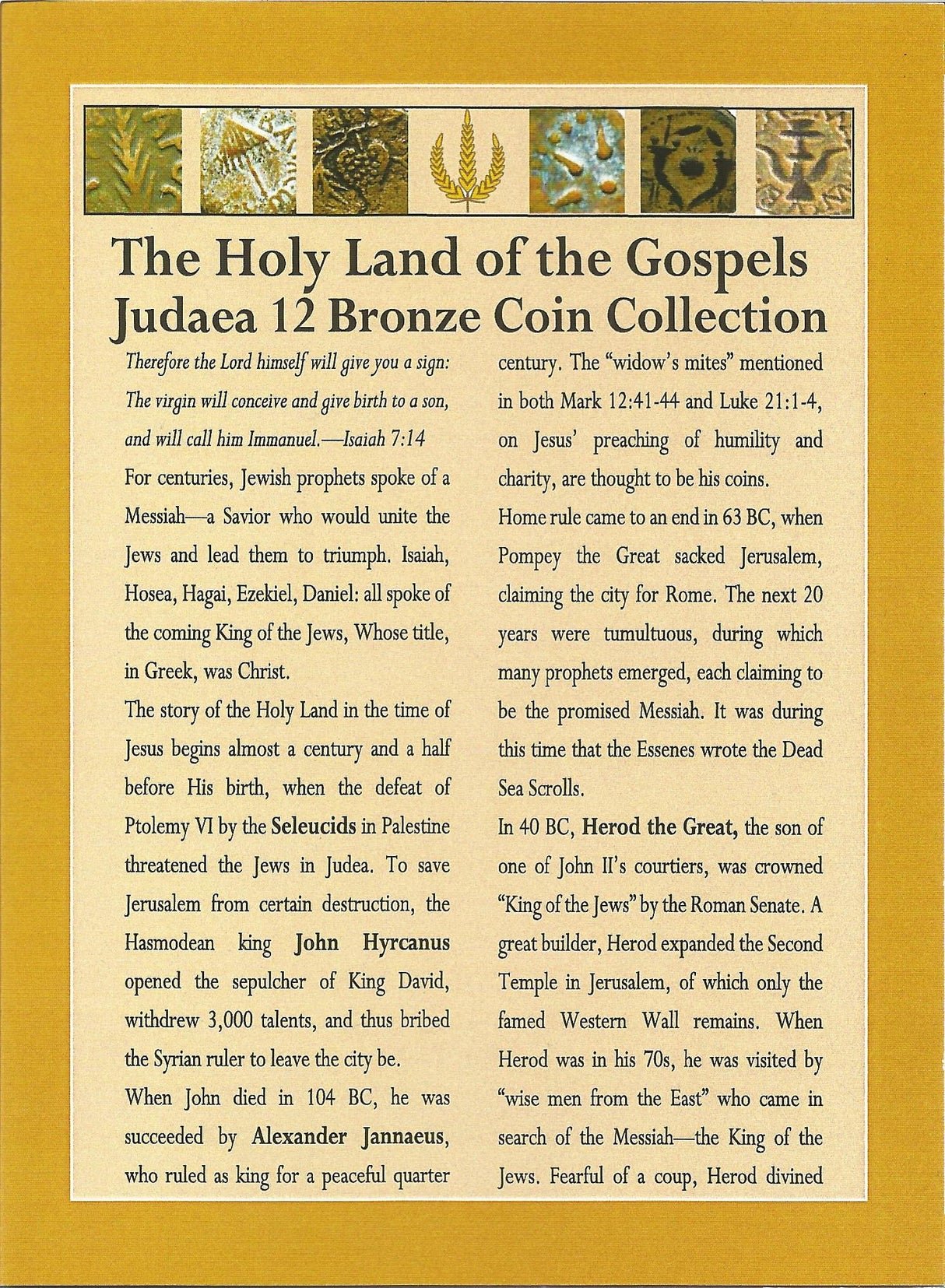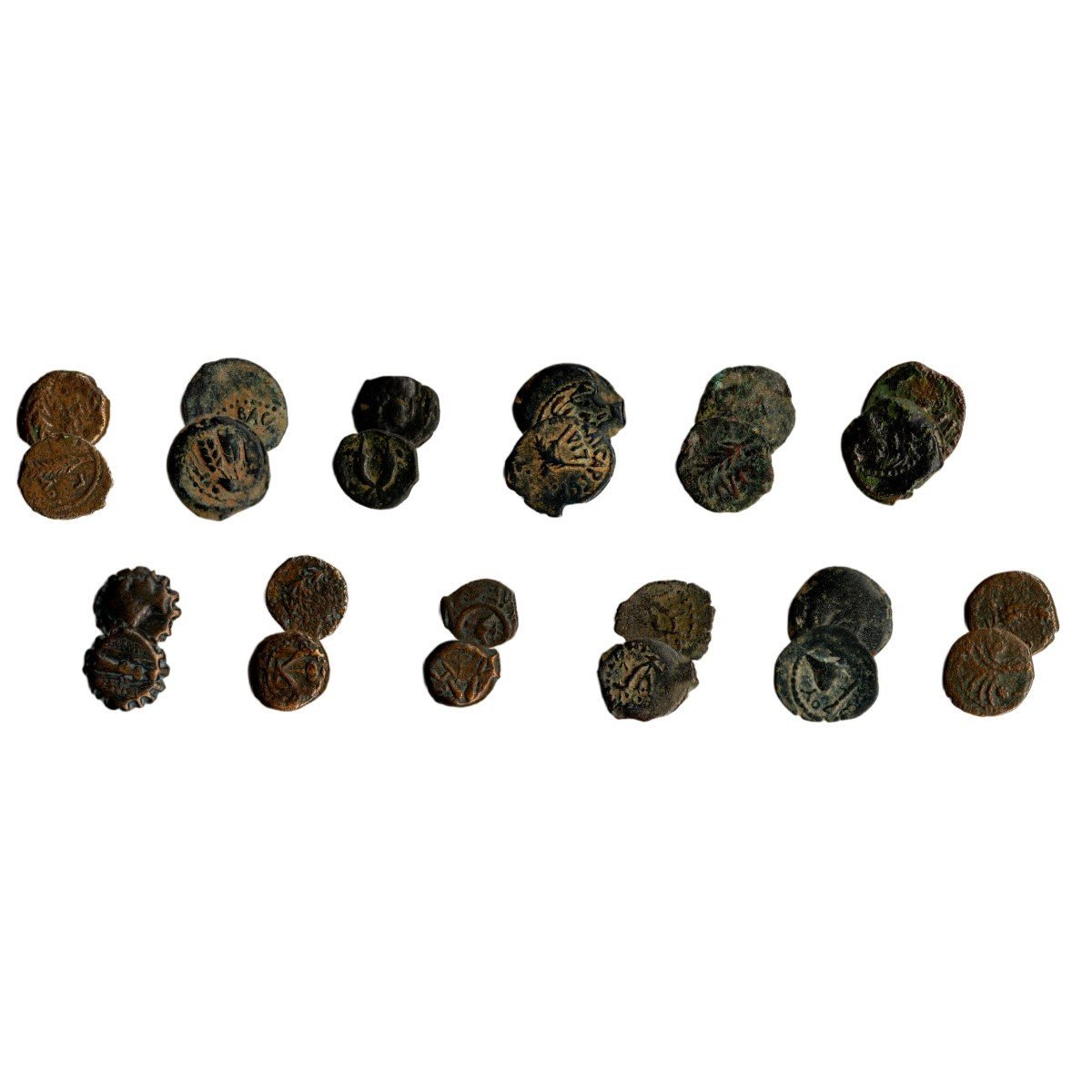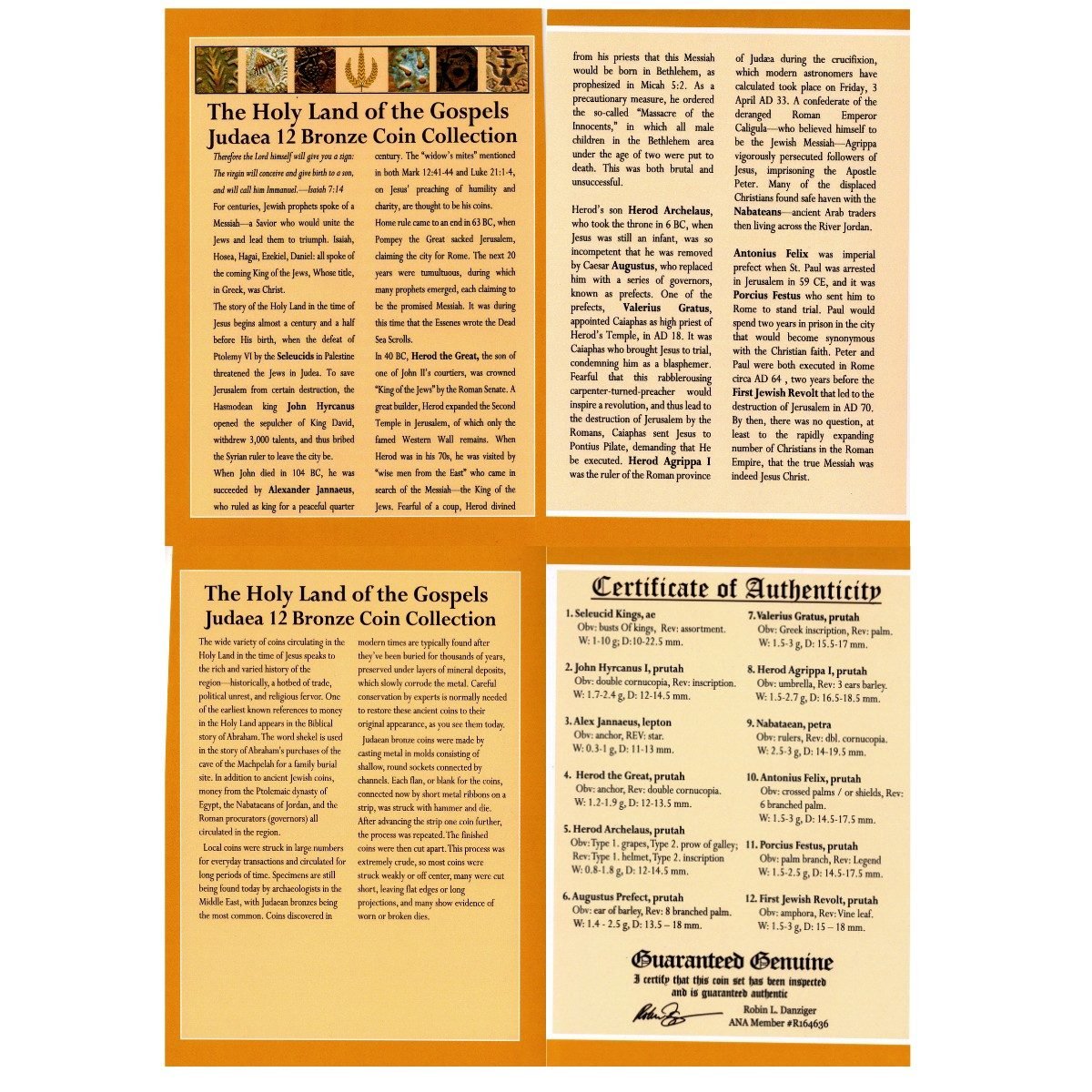 Image 1 of 6
Image 1 of 6

 Image 2 of 6
Image 2 of 6

 Image 3 of 6
Image 3 of 6

 Image 4 of 6
Image 4 of 6

 Image 5 of 6
Image 5 of 6

 Image 6 of 6
Image 6 of 6







Judaea AE Maccabean (Hasmonean Dynasty) Prutah (about 2,100-2,200 years ago)
This small bronze coin (prutah) was minted during the rule of the Hasmonean Dynasty, which governed Judaea following the successful Maccabean Revolt against Seleucid rule. These humble coins represent some of the earliest Jewish autonomous coinage and circulated during the Second Temple Period of Jewish history.
Coin Description:
Front side: Likely features Jewish symbols such as an anchor, cornucopia, or lily, depending on the specific ruler
Back side: Probably contains a Hebrew inscription within a wreath or similar border design
Technical Details:
Bronze composition
Prutah denomination (small bronze coin used for everyday transactions)
NGC certified (Numismatic Guaranty Corporation)
Reference number: MACCABEAN (JV)
Minted approximately 140-37 BCE during the Hasmonean Dynasty
Condition: Certified by NGC, specific grade not provided
Historical Significance: This coin represents Jewish political autonomy achieved after the Maccabean Revolt (167-160 BCE), when Judah Maccabee and his brothers led a successful rebellion against the Hellenistic Seleucid Empire. The established Hasmonean Dynasty ruled as high priests and kings of Judaea for about a century, balancing traditional Jewish practices with Hellenistic influences. Their coinage uniquely avoided human imagery to respect Jewish religious prohibitions against idolatry—a significant departure from surrounding Hellenistic currencies.
This small bronze coin (prutah) was minted during the rule of the Hasmonean Dynasty, which governed Judaea following the successful Maccabean Revolt against Seleucid rule. These humble coins represent some of the earliest Jewish autonomous coinage and circulated during the Second Temple Period of Jewish history.
Coin Description:
Front side: Likely features Jewish symbols such as an anchor, cornucopia, or lily, depending on the specific ruler
Back side: Probably contains a Hebrew inscription within a wreath or similar border design
Technical Details:
Bronze composition
Prutah denomination (small bronze coin used for everyday transactions)
NGC certified (Numismatic Guaranty Corporation)
Reference number: MACCABEAN (JV)
Minted approximately 140-37 BCE during the Hasmonean Dynasty
Condition: Certified by NGC, specific grade not provided
Historical Significance: This coin represents Jewish political autonomy achieved after the Maccabean Revolt (167-160 BCE), when Judah Maccabee and his brothers led a successful rebellion against the Hellenistic Seleucid Empire. The established Hasmonean Dynasty ruled as high priests and kings of Judaea for about a century, balancing traditional Jewish practices with Hellenistic influences. Their coinage uniquely avoided human imagery to respect Jewish religious prohibitions against idolatry—a significant departure from surrounding Hellenistic currencies.
This small bronze coin (prutah) was minted during the rule of the Hasmonean Dynasty, which governed Judaea following the successful Maccabean Revolt against Seleucid rule. These humble coins represent some of the earliest Jewish autonomous coinage and circulated during the Second Temple Period of Jewish history.
Coin Description:
Front side: Likely features Jewish symbols such as an anchor, cornucopia, or lily, depending on the specific ruler
Back side: Probably contains a Hebrew inscription within a wreath or similar border design
Technical Details:
Bronze composition
Prutah denomination (small bronze coin used for everyday transactions)
NGC certified (Numismatic Guaranty Corporation)
Reference number: MACCABEAN (JV)
Minted approximately 140-37 BCE during the Hasmonean Dynasty
Condition: Certified by NGC, specific grade not provided
Historical Significance: This coin represents Jewish political autonomy achieved after the Maccabean Revolt (167-160 BCE), when Judah Maccabee and his brothers led a successful rebellion against the Hellenistic Seleucid Empire. The established Hasmonean Dynasty ruled as high priests and kings of Judaea for about a century, balancing traditional Jewish practices with Hellenistic influences. Their coinage uniquely avoided human imagery to respect Jewish religious prohibitions against idolatry—a significant departure from surrounding Hellenistic currencies.
The Hasmonean dynasty[4] (/hæzməˈniːən/; Hebrew: חַשְׁמוֹנָאִים Ḥašmōnāʾīm; Greek: Ασμοναϊκή δυναστεία) was a ruling dynasty of Judea and surrounding regions during the Hellenistic times of the Second Temple period (part of classical antiquity), from c. 140 BCE to 37 BCE. Between c. 140 and c. 116 BCE the dynasty ruled Judea semi-autonomously within the Seleucid Empire, and from roughly 110 BCE, with the empire disintegrating, gained further autonomy and expanded into the neighboring regions of Perea, Samaria, Idumea, Galilee, and Iturea. The Hasmonean rulers took the Greek title basileus ("king") and the kingdom attained regional power status for several decades. Forces of the Roman Republic intervened in the Hasmonean Civil War in 63 BCE, turning the kingdom into a client state and marking an irreversible decline of Hasmonean power; Herod the Great displaced the last reigning Hasmonean client-ruler in 37 BCE.
Simon Thassi established the dynasty in 141 BCE, two decades after his brother Judas Maccabeus (יהודה המכבי Yehudah HaMakabi) had defeated the Seleucid army during the Maccabean Revolt of 167 to 141 BCE. According to 1 Maccabees, 2 Maccabees, and the first book of The Jewish War by historian Josephus (37 – c. 100 CE),[5] the Seleucid king Antiochus IV Epiphanes (r. 175–164) moved to assert strict control over the Seleucid satrapy of Coele Syria and Phoenicia[6] after his successful invasion of Ptolemaic Egypt (170–168 BCE) was turned back by the intervention of the Roman Republic.[7][8] He sacked Jerusalem and its Temple, suppressing Jewish and Samaritan religious and cultural observances,[6][9] and imposed Hellenistic practices (c. 168–167 BCE).[9] The steady collapse of the Seleucid Empire under attacks from the rising powers of the Roman Republic and the Parthian Empire allowed Judea to regain some autonomy; however, in 63 BCE, the kingdom was invaded by the Roman Republic, broken up and set up as a Roman client state.


